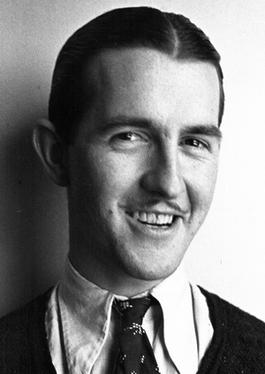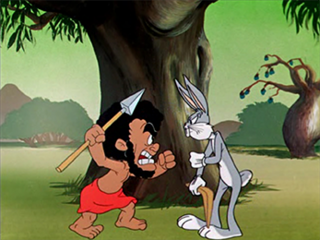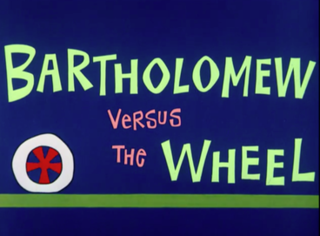
Isadore "Friz" Freleng, credited as I. Freleng early in his career, was an American animator, cartoonist, director, producer, and composer known for his work at Warner Bros. Cartoons on the Looney Tunes and Merrie Melodies series of cartoons from the 1930s to the early 1960s. In total he created more than 300 cartoons.

Robert Porter McKimson Sr. was an American animator and illustrator, best known for his work on the Looney Tunes and Merrie Melodies series of cartoons from Warner Bros. Cartoons and later DePatie–Freleng Enterprises. He wrote and directed many animated cartoon shorts starring Bugs Bunny, Daffy Duck, Porky Pig, Foghorn Leghorn, Hippety Hopper, Speedy Gonzales, and the Tasmanian Devil, among other characters. He also developed Bugs Bunny's design in the 1943 short Tortoise Wins by a Hare.

The Goofy Gophers are animated cartoon characters in Warner Bros.' Looney Tunes and Merrie Melodies series of cartoons. The gophers are small and brown with tan bellies and buck teeth. They both have British accents. Unnamed in the theatrical cartoons, they were given the names Mac and Tosh in the 1960s TV show The Bugs Bunny Show. The names are a pun on the surname "Macintosh". They are characterized by an abnormally high level of politeness.

Tweetie Pie is a 1947 Warner Bros. Merrie Melodies cartoon directed by Friz Freleng. The short was released on May 3, 1947, and stars Tweety with Sylvester, who is called "Thomas" in this cartoon.
Warner Bros. Cartoons, Inc. was an American animation studio, serving as the in-house animation division of Warner Bros. during the Golden Age of American animation. One of the most successful animation studios in American media history, it was primarily responsible for the Looney Tunes and Merrie Melodies series of animated short films. The characters featured in these cartoons, including Bugs Bunny, Daffy Duck, and Porky Pig, are among the most famous and recognizable characters in the world. Many of the creative staff members at the studio, including directors and animators such as Chuck Jones, Friz Freleng, Robert McKimson, Tex Avery, Robert Clampett, Arthur Davis, and Frank Tashlin, are considered major figures in the art and history of traditional animation.

Bushy Hare is a 1950 Warner Bros. Looney Tunes cartoon directed by Robert McKimson. The short was released on November 18, 1950, and stars Bugs Bunny.

Rabbit's Kin is a 1952 Warner Bros. Merrie Melodies animated short directed by Robert McKimson and written by Tedd Pierce. The cartoon was released on November 15, 1952, and stars Bugs Bunny. The cartoon was animated by Charles McKimson, Herman Cohen, Rod Scribner, Phil DeLara and Keith Darling. The music was scored by Carl Stalling while the layouts and backgrounds were done by Robert Givens and Richard H. Thomas, respectively.

Buckaroo Bugs is a 1944 American Western Looney Tunes cartoon film directed by Bob Clampett. The cartoon was released on August 26, 1944, and features Bugs Bunny in his official Looney Tunes debut.

The Grey Hounded Hare is a 1949 Looney Tunes short film made by Warner Bros. Pictures and starring the voice talent of Mel Blanc. The film stars Bugs Bunny. It was directed by Robert McKimson, and animated by John Carey, Phil DeLara, Manny Gould and Charles McKimson, with music scored by Carl Stalling. The title refers to the greyhounds of the plot as well as "hounded" meaning pestered or pursued relentlessly.
The Astroduck is a 1966 Warner Bros. Looney Tunes cartoon directed by Robert McKimson. The short was released on January 1, 1966, and stars Daffy Duck and Speedy Gonzales.
Go Go Amigo is a 1965 Warner Bros. Merrie Melodies cartoon directed by Robert McKimson. The short was released on November 20, 1965, and stars Daffy Duck and Speedy Gonzales.
Suppressed Duck is a 1965 Warner Bros. Looney Tunes theatrical cartoon directed by Robert McKimson and written by David Detiege. The short was released on June 18, 1965, and stars Daffy Duck. It is Daffy's only solo cartoon in the DePatie–Freleng series.
Tease for Two is a 1965 Warner Bros. Looney Tunes directed by Robert McKimson. The short was released on August 28, 1965, and stars Daffy Duck and the Goofy Gophers in their final appearance. The voices were performed by Mel Blanc. The title is a play on the phrase "tea for two."

A Ham in a Role is a 1949 Warner Bros. Looney Tunes short starring the Goofy Gophers along with an unnamed dog who is based on stage/film actor John Barrymore. The cartoon was planned by Arthur Davis, but was finished and directed by Robert McKimson. It was released by Warner Bros. Pictures on December 31, 1949, but some sources list the release date as January 1, 1950. The cartoon draws heavily from the works of William Shakespeare, with its gags relying on literal interpretations of lines from Hamlet, Julius Caesar, Richard III, and Romeo and Juliet.

Bill of Hare is a 1962 Warner Bros. Merrie Melodies cartoon directed by Robert McKimson. The short was released on June 9, 1962, and stars Bugs Bunny and the Tasmanian Devil.
Well Worn Daffy is a 1965 Warner Bros. Looney Tunes animated short directed by Robert McKimson. The short was released on May 22, 1965, and stars Daffy Duck and Speedy Gonzales.
A-Haunting We Will Go is a 1966 Warner Bros. Looney Tunes cartoon directed by Robert McKimson. The short was released on April 16, 1966, and stars Daffy Duck, Speedy Gonzales and Witch Hazel. As with the other Witch Hazel cartoons, June Foray voices Witch Hazel while Mel Blanc voices Speedy Gonzales, Daffy Duck, and Daffy's nephew.

The Wise Quacking Duck is a 1943 Warner Bros. Looney Tunes cartoon directed by Bob Clampett. The cartoon was released on May 1, 1943, and stars Daffy Duck.
Robert Herman Givens was an American animator and character designer, responsible for the creation of Bugs Bunny. He was the leading character designer for Leon Schlesinger, creating over 25 successful characters for both Leon Schlesinger Productions and later Warner Bros. Cartoons. He also did the storyboards and layout designs. He worked for numerous animation studios during his career, including Walt Disney Animation Studios, Warner Bros. Cartoons, Hanna-Barbera, and DePatie–Freleng Enterprises, beginning his career during the late 1930s and continuing until the early 2000s. He was a collaborator with the Merrie Melodies/Looney Tunes directors at Warner Bros. and Chuck Jones' production company.

Bartholomew Versus the Wheel is a 1964 Warner Bros. Merrie Melodies cartoon directed by Robert McKimson. It was released theatrically on February 29, 1964.












